PLA-Biopolymer – rPET-packaging 14-11-2022 - Arhive
PLA-Biopolymer – rPET-packaging
Viscose-Staple-Fiber – Petrochemicals
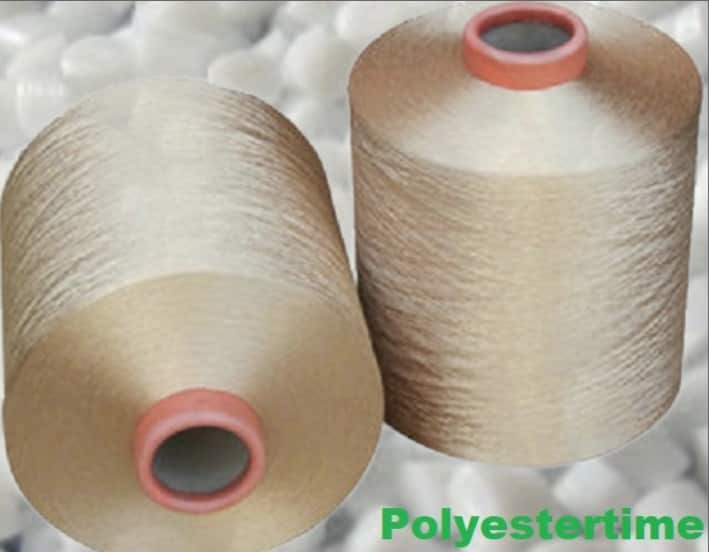
Crude Oil Prices Trend
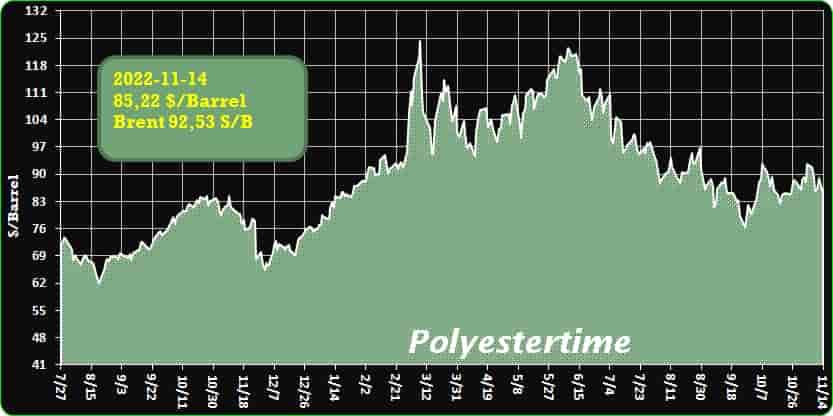
Crude Oil Prices Trend Polyestertime
-Earthfirst® Films Receives Home Compostable Film Certifications from TUV Austria
Earthfirst® Films Expands Film Options With Certified Home Compostable Print, Sealant and Flow Wrap Films
Earthfirst® Films added a line of TUV NF T51-800 certified home compostable films to its existing line of industrial compostable options. PHA in combination with other biopolymers, are engineered for films with at least 85% new carbon content¹. Available in print, sealant and flow wrap films, these new options expand End of Life (EOL) environments as well as provide greater accessibility to a larger consumer base.
Inherent in their chemistry, home compostable films are Greenhouse Gas (GHG) favorable to industry fossil-fuel based alternates and naturally lower packaging’s carbon footprint. The new films are built for performance within food, grocery retail, quick service restaurant, stadium foodservice and other consumer and industrial market segments.
“We are dedicated to bioplastic film innovation and passionate about advancing sustainability for a healthier planet,” cited Guenther Winnerl, Earthfirst® Films Chief Commercial Officer.PLA-Biopolymer – rPET-packaging
“Our customers are transitioning to compostable films as part of their brand identity. Some are preparing for 2025 sustainability commitments and regulatory bills and our portfolio of films contributes to their objectives,” Winnerl continues.
Earthfirst® Films are DIN CERTCO certified for Industrial Compostability and TUV Austria Certified for Home Compostability. All Earthfirst Films are FDA compliant for food contact.
¹Percentages are subject to change with any biopolymer formulation changes for film properties
For more information on Earthfirst® Biopolymer Films, visit earthfirstfilms.com.
Earthfirst® Biopolymer Films by PSI – Americas| Earthfirst Biopolymer Films by Sidaplax – EMEA
Earthfirst® Biopolymer Films is a global manufacturer of bio polymer EarthFirst® compostable packaging films within food, beverage, quick-serve restaurants and other consumers packaged goods (CPG) and industrial market segments.
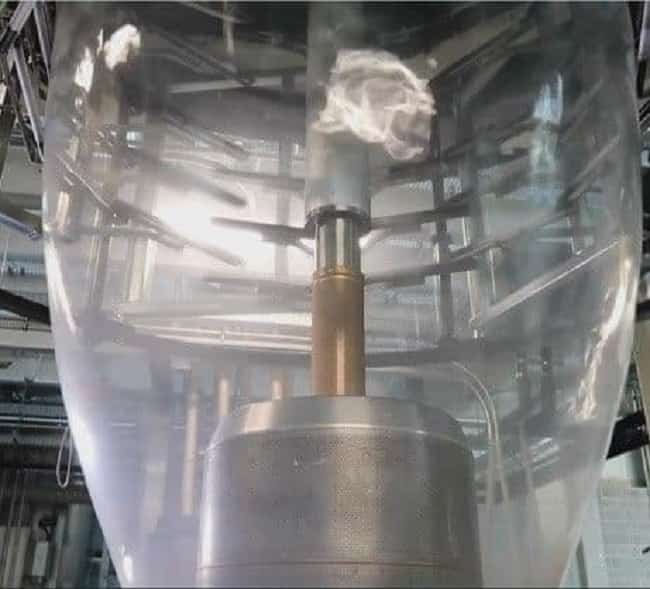
-Covestro, Hasco Vision partner on PIR polycarbonate
As the drive for more circularity in plastics continues to accelerate, the industry is having to rethink practices long taken for granted. In some cases, the result has been a radical departure from ‘business as usual’.
A good example is the recent agreement signed between China’s leading auto lighting supplier Hasco Vision and materials manufacturer Covestro establishing a partnership between the two companies that will ultimately contribute to the low-carbon development of carmakers.
The companies aim to build a closed-loop recycling business model that would guarantee that the plastic waste generated during the manufacture of automotive lamps is recycled into high quality and traceable post-industrial recycled polycarbonates and polycarbonate blends. Often, the difficulty with recycled materials is that these tend not to be either. Transparency regarding the origin of recycled plastics is often lacking, making them unsuitable for use in the auto industry, where strict standards and regulations apply with respect to the materials used. PLA-Biopolymer – rPET-packaging
Covestro has for many years supplied Hasco Vision with the raw materials it needs to produce vehicle lamps.
According to the new agreement signed at Covestro’s booth at the China International Import Expo, Covestro will also collaborate with other partners in the recycling industry to retrieve used plastics from Hasco’s manufacturing sites before turning them into the kind of high-quality PIR polycarbonates and polycarbonate blends that Hasco can use to produce new automotive components.
This collaboration allows full transparency and traceability along the value chain, said Lily Wang, Head of the Engineering Plastics segment at Covestro, and will ‘ensure the supply of consistently high-quality PIR plastics to meet the growing demands for more sustainable materials and lower emissions in the automotive industry’.
The closed-loop recycling of post-industrial plastics is an effective sustainability solution as such recycled materials have “virgin-like” quality, are easily traceable and help reduce the carbon footprint of vehicles compared with conventional fossil-based materials.
“This innovative cooperation between HASCO and Covestro breaks with convention in terms of raw materials supply as it focuses on using post-industrial recycled materials to create a circular economy,” said Jinlong Ao, Deputy General Manager and Chief Technology Officer of Hasco Vision.
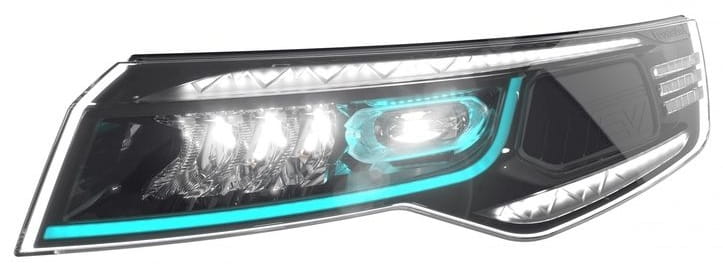
-NatureWorks Selects General Contractor for New Fully Integrated Ingeo™️ PLA Biopolymer Manufacturing Facility in Thailand
Early-works construction on the new biopolymer manufacturing site began in June 2022 with expected completion of the facility on schedule for the second half of 2024.
Early-works construction on NatureWorks’s new Ingeo PLA manufacturing facility in Thailand began in June 2022 keeping expected completion of the facility on schedule for the second half of 2024. PLA-Biopolymer – rPET-packaging
NatureWorks, the world’s leading manufacturer of low-carbon polylactic acid (PLA) biopolymers made from renewable resources, has selected TTCL Public Company Limited (SET: TTCL) as the general contractor for procurement, construction, commissioning, and startup support services for their new Ingeo™️ PLA manufacturing complex in Thailand. The new facility is designed to be fully integrated and will include production of lactic acid, lactide, and polymer. Located on the Nakhon Sawan Biocomplex (NBC) in Nakhon Sawan Province, the manufacturing site will have an annual capacity of 75,000 tons of Ingeo biopolymer and will produce the full portfolio of Ingeo grades.
In June 2022, site preparation for the new manufacturing facility at the NBC was completed and NatureWorks signed an agreement with Sino Thai Engineering and Construction PCL (STECON) to begin early-works construction for piling, underground piping, storm water management, and tank foundations. Currently underway, the early-works construction progress keeps completion of the facility on schedule for the second half of 2024.PLA-Biopolymer – rPET-packaging
“We are pleased to see the continued progress on the construction of our second Ingeo manufacturing complex that will help us address the increasing global market demand for sustainable materials,” said Steve Bray, VP of Operations at NatureWorks. “With the selection of TTCL as our general contractor, we are looking forward to leveraging their expertise in executing large, highly technical capital projects in Thailand.”
NatureWorks expects to hold a cornerstone laying ceremony to honor the progress of site construction in February 2023.
In 2021, NatureWorks first announced the authorization for initiating their global capacity expansion plan beginning with their second Ingeo biopolymer manufacturing facility in Thailand. NatureWorks became the first company to produce PLA biopolymers at commercial scale in 2002. NatureWorks expanded its flagship Blair, Nebraska facility to an annual total capacity of 150,000 metric tons in 2013 with an additional capacity expansion announced in 2020 to further increase the availability of Ingeo biopolymers.
The expanded global production of Ingeo biopolymers will support growth in markets including 3D printing and hygiene as well as compostable coffee capsules, tea bags, flexible packaging, and food serviceware that demand sustainable, low-carbon materials and require the high-performance attributes that Ingeo is uniquely suited to deliver.
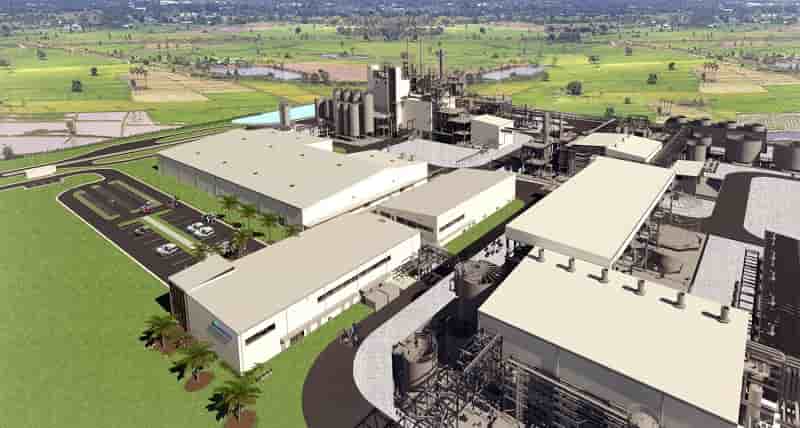
-Bio-Polyamide, Specialty Polyamide and Precursors Market to capture a CAGR of 6% during 2022-2032
During the projected period, the bio-polyamide, specialty polyamide, and precursors market is expected to grow at a CAGR of 6%. The market is expected to be worth US$ 185.47 million in 2022 and US$ 332.15 million by 2032.
Polyamide is among the more dominant of engineering plastics with applications in various end-user industries including automotive, electronics, construction, sports equipment and consumer goods. Polyamide, also known as nylon occurs in nature in form of silk and wool and can be produced artificially through polymerization.
Polyamide-66 and polyamide-6 are among the most dominant artificially made polyamide employed mainly in the production of fibers. Polyamides such as polyamide-11, polyamide-12 are employed primarily as engineering plastics.PLA-Biopolymer – rPET-packaging
Undecanoic acid and sebacic acid derived from castor oil are among the most dominant raw materials used in the production of bio based polyamide. Owing to the eco logical benefits, bio based polyamides are gaining acceptance and are anticipated to be the fastest growing product segment during the forecast period.
Caprolactam, Adipic Acid and Hexamethylenediamine are dominant precursors for polyamides. Caprolactam, a monomer of polyamide 6 is the most dominant precursor. Automotives is the largest application segment for polyamide and the trend is expected to continue in the near future. Demand for polyamide in packaging applications is expected to outdo other application segments in terms of growth rate during the forecast period.
Several end user industries for polyamide include consumer goods hence, GDP growth rate and increasing disposable income of people in a region are some of the important determinants for polyamide demand in a region.
Characteristics such as light weight, abrasion resistance and chemical resistance of polyamide make polyamides suitable for transportation applications.
Transportation applications have been a major factor driving demand for polyamides. Castor oil is the most dominant raw material employed in the production of bio based polyamide. PLA-Biopolymer – rPET-packaging
India is among the leading suppliers of castor oil and is also expected to be among the fastest growing region for the demand of bio-polyamide, specialty polyamide and precursors. Growing investment in the emerging economies of India, China and Brazil is expected to drive market growth during the forecast period.
Petroleum based products are used in the production of several specialty polyamide. Therefore, volatile pricing of raw material has been a major restraint for these polyamides. Increasing research and development activities to improve efficiency of bio based polyamide is expected to offer huge growth opportunity in the market.
Asia Pacific dominates the global demand for bio-polyamide, specialty polyamide and precursors and the trend is expected to continue during the forecast period. Increasing industrial investment and high economic growth rate in the emerging economies of India and China has been a major factor driving demand for bio-polyamide, specialty polyamide and precursors in the region.
China dominates the global bio-polyamide, specialty polyamide and precursors both in terms of production and consumption. North America is the second largest consumer for polyamides.PLA-Biopolymer – rPET-packaging
Demand for bio-polyamide, specialty polyamide and precursors in North America and Europe is anticipated to grow at a sluggish rate primarily owing to market saturation in various end user industries. Emerging economies in South America are anticipated to drive the demand for polyamide in the RoW region.
Bio-polyamide, specialty polyamide and precursors market is concentrated and dominated by few major players. Ascend Performance Materials Inc., E. I. du Pont de Nemours and Company, Honeywell International Inc., Li Peng Enterprise Co., Shenma Industrial Co. Ltd., Nantong Jingshan Polyamide Fibre Co., Ltd., Synergy Polymers are some of the major players in the bio-polyamide, specialty polyamide and precursors market.
This research report presents a comprehensive assessment of the market and contains thoughtful insights, facts, historical data and statistically-supported and industry-validated market data and projections with a suitable set of assumptions and methodology. It provides analysis and information by categories such as market segments, regions, product types and distribution channels. PLA-Biopolymer – rPET-packaging
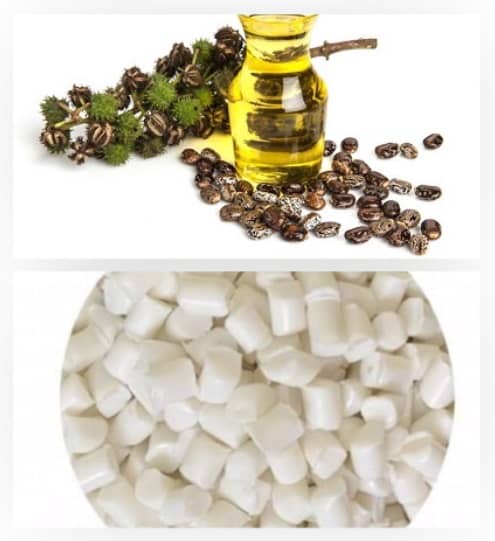
-Sustainable rigid packaging – SACMI to host the AIM “Technological Day” on new cellulose-based materials
From pioneering research to applied technology, building the development prospects of an entire industry: cellulose-based materials for rigid sustainable packaging is a hot topic, and will be the focus of the Technological Day organized by AIM (Italian Association of Science and Macromolecule Technology), scheduled for 22nd November 2022.
Hosted by SACMI – a member of the Association’s governing council and scientific board – the day will bring together leading figures from the worlds of research, university and business, including technology users and providers alike.
Always at the forefront of advanced research into polymers – from both a scientific and technical-application perspective – AIM turns the spotlight on an area that is increasingly viewed as a ‘pillar’ of sustainability in rigid packaging.PLA-Biopolymer – rPET-packaging
The most abundant polymer of natural origin, cellulose is in fact sustainable by definition. No fossil fuels are needed to obtain it. Above all, at the end of their life cycles, cellulose-based products can be disposed of together with other compostable materials or fed into the paper recycling chain (depending on formulation).
Hence the keen interest in the possibility of making packaging items – containers and especially closures – from compounds with plastic polymers, or even near-pure cellulose fiber that has been treated with additives to give it the required water-repellent, strength and sealing properties.
Achieving these ambitious goals will involve several scientific and technological challenges; such issues will be the focus of the protagonists’ talks on 22nd November.
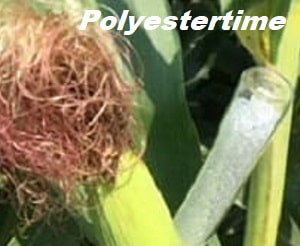
-Andritz delivers textile recycling line to France
Andritz delivered, installed, and commissioned a full textile recycling line for Renaissance Textile in Laval, France.
The project’s goal is to create new fibers from the gathered post-consumer clothing, which will ultimately be woven into new recycled fabrics. The brand-new 12,000 m2 facility has a full tearing line.PLA-Biopolymer – rPET-packaging
Nicolas Nojac, director of Renaissance Textile, comments: “Our first recycling line is dedicated to white polycotton textiles that mainly come from the healthcare and food processing industries. This equipment enables us to recycle 3,000 tons of textiles every year, representing 10 million items of clothing. We also plan to install two additional lines by the end of 2023 and 2025, respectively, to enlarge the range of recycled textiles by adding different colors and fibers”. In this context, the company plans to create 110 new direct jobs by 2025.
Source: Andritz
CHALLENGES. SOLUTIONS.
The world of textiles and the textile industry should be under no illusions about their responsibilities. The price of fast fashion is that making clothes accounts for around 10 % percent of CO2 emissions from human activity. Despite the need for circularity in our use of resources, the clothing industry has been fed by a distinctly linear value chain. Clothing is notoriously over-supplied, and while it might be resold, recycled into cloths or insulation, much of it ends up incinerated or in landfill. Textile-to-textile circularity has been conspicuously absent.
But this is changing thanks to media pressure, consumer demand, regulations, and technology. Our ignorance about the price the planet pays for our full wardrobes is at last being replaced by a deep concern about the impact of textiles on the environment. There is also an increasing awareness of the need to make greater use of sustainable raw materials in the fiber and textile production. Meanwhile, existing technologies are proving highly adaptable to textile recycling, and projects that take recycling a step further into true circularity are flourishing. PLA-Biopolymer – rPET-packaging
As part of its ESG Environment Social Governance (ESG) program, the ANDRITZ GROUP is at the core of the movement to provide industrially and economically viable solutions for recycling pre- and post-consumer waste made from natural and synthetic fibers. There is no single, catch-all solution to the recycling of textiles, and this plays to ANDRITZ’s strengths because the group has such a diversity of solutions to offer and several cooperation partners covering the value chain from recovery of fibers to chemical modification and preparation for the production of yarn.
Some solutions are derived from strong expertise in the field of pulp and paper; others have been developed specifically for textiles. As a whole, they offer single and multiple complementary technologies to address the needs of different textile recycling challenges.
What follows is a brief resumé of ANDRITZ’s scope of supply for textile waste recycling machinery.
CONDITIONING OF FEED MATERIAL
Conditioning of textile waste lays the foundation for the subsequent textile recycling process, whether it is based on mechanical, chemical, combined, or other customer-specific treatment. Numerous parameters influencing the choice of technology include the nature of the waste (garments, linens, carpets, white/colored textiles, etc.), the feeding conditions (e.g., baled or loose feed material), the required size of the shredded textiles in output, the presence of impurities such as zippers, the output purity, the capacity, and all other requirements of downstream processing.PLA-Biopolymer – rPET-packaging
ANDRITZ Reject and Recycling offers single equipment units and complete conditioning systems, from material feed and shredding right up to the finally conditioned material. A landmark was ANDRITZ Reject and Recycling’s order in 2021 from Swedish company Renewcell for a 60,000 t/a textile recycling line, featuring ADuro shredders, for its first large-scale textile-to-textile recycling plant in Sundsvall. At the same time, shredding systems capable of managing volumes of up to 200 t/d are being developed and optimized in combination with the separation technique, based on trials conducted in the ART Center (ANDRITZ Recycling Technology Center) near Graz, Austria.
Complementary to the services of ANDRITZ Reject and Recycling, ANDRITZ Laroche offers a different mechanical conditioning process based on tearing. With more than 2,000 reference projects worldwide offering one of the largest installed bases for textile recycling mills, ANDRITZ Laroche’s mechanical recycling process can be preparatory to the following main options: nonwovens production lines, short staple fiber spinning mills for yarn “respinning” with the creation of woven or knitted fabrics, including blends of up to 100 % recycled fibers, or to downstream chemical processes for the production of new man-made fibers if required. Let’s look at those markets.
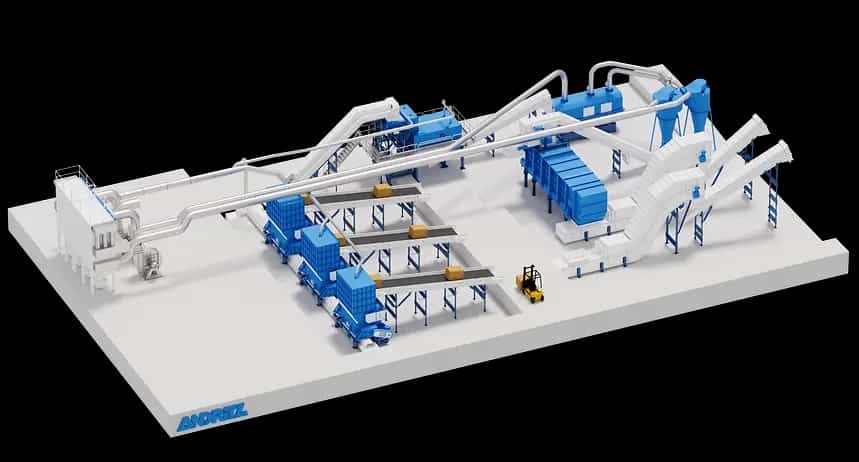
-Avoid Four Common Traps In Granulation
Today, more than ever, granulation is an important step in the total production process. Our expert explains a few of the many common traps to avoid when thinking about granulators
Today, more than ever, granulation is an important step in the total production process. For many processors, specifically those making industrial parts, regrind has often been considered a problem or a necessary evil. Now, due to the higher cost of materials combined with increased demands from customers to include reground and/or recycled materials in the product, the use of regrind should be viewed as a significant marketing opportunity as well as a cost-saving method.PLA-Biopolymer – rPET-packaging
With the advances in cutting technology and machine design, reductions in energy consumption, and increased automation available for size-reduction systems, there are many cost-effective solutions available to provide quality regrind to the manufacturing process without adversely affecting production rates, part quality, or the plant environment. The following are just a few of the many common “traps” to avoid when thinking about granulation and granulators specifically.
TRAP 1: A GRANULATOR UNSUITED FOR THE TASK
A major trap is to think that a granulator is just a granulator and that horsepower and throat size are all you need to know to specify an effective granulation process. Nothing could be further from the truth. Ask any blow molder who has been in the business for more than 10 years and you will more than likely find that they have experienced their products “floating” on the rotor. The product bounces around in the cutting chamber for long periods before it is finally ingested by the rotor. This leads to lower throughputs than expected from the machinery as well as very poor regrind quality.
In order to cut material efficiently, you’ll need a granulator configured specifically for your application. If not, expect higher energy consumption, excessive dust and noise, lower capacity, and increased knife wear. Today, most sophisticated granulator machinery suppliers offer modular products that allow the builder to configure core machine components to match the specific application requirements.
You’ll need at least seven critical pieces of information to size the granulator appropriately:
- Application or process: Each process—blow molding, injection molding, extrusion, recycling—imposes different demands on a granulator.
- Material: Different materials can react very differently in a granulator.
- Method of feeding: Will it be manual, conveyor, robot, or roll feeding, relief head, etc.?
- Part description: A physical description of the intended parts, such as bottles, runners, or sheet, is essential to proper configuration of the granulator.
- Part dimensions: Try to capture the range of potential part sizes include largest and smallest, thickest and thinnest.
- Capacity: What lb/hr or kg/hr is expected?
- Screen size: What final particle size do you want to reintroduce into your process?
Through careful analysis of the above information, an experienced size-reduction professional will be able to design and recommend an appropriate solution for what the processor is trying to achieve. This should include options on rotor and cutting-chamber design and the number of fixed knives required. Effective hopper design will be chosen to accommodate the parts and eliminate flyback generated during granulation.
In addition to matching the machine to the application, machine builders will be able to provide the processor with a list of options that will help them with running the machine, such as high-level and high-amp alarms, soundproofing of the hopper and base, and a variety of evacuation and electrical control options.
TRAP 2: A GRANULATOR THAT IS HARD TO MAINTAIN
Maintenance of granulators and their critical cutting components is the most neglected area of service in many plants. Maintenance is often put off because of time considerations—that is, the granulator design does not lend itself to the task. Poor or inadequate instruction manuals and lack of supporting solutions to simplify functions such as knife servicing make matters worse. Lack of maintenance alone can lead to the most common problem associated with regrind—poor quality granulate with excessive fines and high dust content in the material and in the plant environment.PLA-Biopolymer – rPET-packaging
The two major reasons for dust and fines are dull and/or improperly gapped knives. The sharper the knives, the more efficiently the granulator will cut the scrap, especially with soft, energy-absorbing materials such as thermoplastic rubber or polyolefin films. Sharper knives produce a cleaner cut without pulling and tearing, yielding higher throughputs, less dust and fines, less noise, and greater energy efficiency.
Today, most leading granulator manufacturers realize that with the increasing cost of materials and shrinking maintenance budgets, it’s important that granulators be designed for easy cleaning and knife maintenance. Quick and safe access to the heart of the granulator is critical for optimal productivity.
Think about a processor running multiple colors and materials in short-run production cycles, who needs to clean the machine thoroughly between each run to avoid contamination. The granulator must be designed to allow the operator to visibly confirm that the machine is clean while ensuring that the operator is safe when inside the machine. That is, the granulator should have redundant safety switches for maximum safety and should have features such as power-assisted tilt-back hoppers, rotor locking devices, and easily accessible and removable screen cradles and screens. Visibly clean means the operator should have visual paths to all areas of the machine—no hidden nooks and crannies—to inspect and confirm the machine is free from all previous colors or materials that may lead to contamination in the next run.
TRAP 3: A GRANULATOR WITH A POOR KNIFE DESIGN
Another common trap is knife positioning and design with little or no scissor-cutting action, poor rotor design (static rotating knives), non-optimized location of fixed knives, and less than optimal rotor knife speed. Any or all of these can lead to non-uniform regrind with high dust and fines content and also lead to a high level of wear and tear on the granulator.PLA-Biopolymer – rPET-packaging
Always look for a feature known as “adjustable rotating knives.” These knives are the ones bolted to the rotor. Along with the fixed knives, they must be kept properly gapped and sharpened.
In older granulator designs, these knives are generally fixed to the rotor and thus not adjustable. Because you remove knife material whenever you resharpen, the effective rotor diameter can become smaller and smaller over the life of the knife. Typically about 10 mm or 3/8 in. of knife material can be removed over several resharpenings.
With an older machine design, the normal procedure is to move the fixed knives forward to compensate for the material ground off the rotating knives. This results in a reduction of the cutting diameter of the granulator and increases the distance from the rotating knife tips to the screen. As you also cut material against the screen, this increased distance between the knife tips and the screen leads to the “balling” of the material on top of the screen, and a much longer residence time of the material in the cutting chamber, generating considerably more dust and fines.
Additionally, moving the fixed (bed) knife forward to compensate for the shortened rotating knives leads to creation of a “shelf” in the cutting chamber, where the material can easily build up. This shelf impedes the feed into the down stroke of the cutting chamber and results in less-effective cutting.
Pre-adjustable knives and cassette knives are features found on more modern machine designs. Recognizing the importance of knife sharpness and gap, and their relationship to final granulate quality, many machine manufactures have standardized on more maintenance-friendly designs for the knives. Pre-adjustable knife fixtures that allow the maintenance staff to set the critical gap outside the machine reduce the overall downtime of installing and gapping resharpened knives. Gone are the days of sticking feeler gauges into dark crevices while trying to adjust knives in the machine.
Moreover, because the fixed knives are coming into a machined stop in the cutting chamber, rotating knives can be gapped independently, allowing each rotating knife to have the exact same gap with respect to the fixed knives. This is impossible with static (non-adjustable) rotating knives. Another benefit of adjustable rotating knives is the ability to sharpen each knife independently rather than together as a set. This allows for the minimum amount of material to be ground off each knife during each resharpening, resulting in longer overall knife service life.PLA-Biopolymer – rPET-packaging
TRAP 4: A GRANULATOR THAT IS OVER-FED
Many processors seemingly try to destroy their granulator not long after receiving it, in the name of “testing the limits” of what the capacity of the granulator really is. Your granulator was sized for a particular application and, hopefully, it is still used in that same application. But often when an existing granulator is wheeled across the shop floor to perform its duties for a different part or job, the materials are different, the throughput is different…in fact, everything is different from what the granulator was originally designed for.
Over-feeding your granulator will obviously back it up, reducing productivity. The decrease in air flow associated with a completely full cutting chamber leads to less-effective evacuation of the machine. And infeed material sits on top of the rotor, waiting to be ingested into the cutting chamber. That material, because it is riding on top of the knives and not being cut, is dulling your knives at a faster than normal rate. In some cases of over-feeding, the granulator approaches the maximum amp load capacity of the drive motor and simply jams or ceases working.
Just as it’s better to remove regrind automatically from your granulator with an appropriately sized evacuation system, it’s also better to automatically meter-feed your granulator—either with a robot or a conveyor. That way, there is no chance of over-feeding your unit.
There are several electrical options to help with optimized feeding of the granulator. High-amp alarms can tell you when you are working the drive motor too hard and help the operator understand when to back off the feed when feeding manually. High-level alarms can help the operator understand and avoid evacuation problems, for example if the feed rate is exceeding the evacuation rate it may be as simple as waiting for the evacuation system to catch up. It also may save the system from plugging up entirely, resulting in potentially expensive damage to the granulator motor.PLA-Biopolymer – rPET-packaging
It’s important to understand how the granulator is sized for a throughput rate. There is a big difference between instantaneous rate and intermittent rate, the latter generally being how the granulator is sized.
Let’s say the granulator is sized for 2000 lb/hr: This generally means that the machine should be fed at a rate of approximately 33 lb/min (2000 ÷ 60). If you put 100 lb of material in the hopper in a matter of seconds, don’t expect the granulator to perform. This is a very common occurrence with hand-fed granulators.
It is also important to avoid under-feeding. If your granulator sits idle and the rotor spins without parts inside, the energy efficiency is greatly decreased. You can and should expect a certain throughput rate from your granulator, but if your scrap is sitting next to your machine in a gaylord or storage area, you are definitely not getting the most from your unit.
What inevitably happens is that an over-eager operator dumps the whole box into the granulator. The result: downtime. Regular, steady feeding of your granulator is best for you and for the machine.
Despite their status as second-class citizens, granulators can help processors be more efficient and profitable. A basic understanding of the traps in granulation and the areas where granulators need the most attention can help you plan for the purchase of a granulator or understand the importance of your maintenance schedule to ensure a long, productive life for your unit.
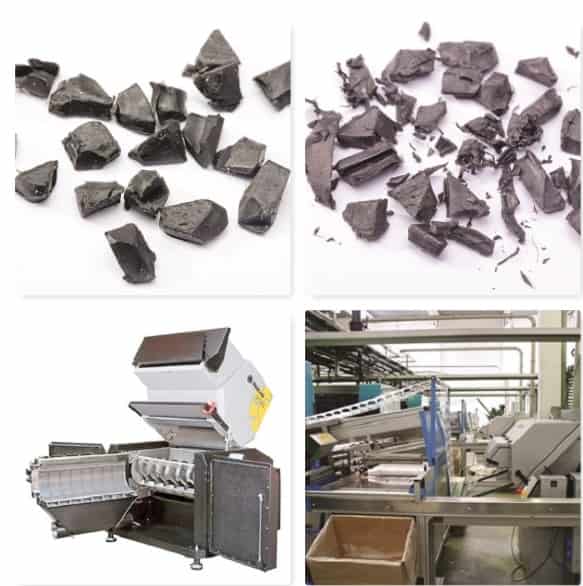
PLA-Biopolymer – rPET-packaging
